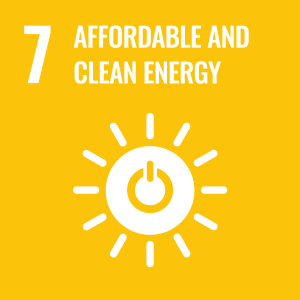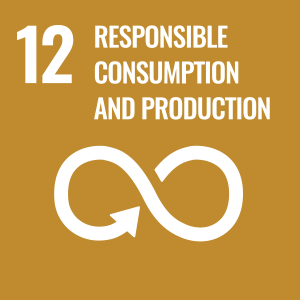
Dr Mona Chitnis
About
Biography
Mona is Associate Professor (Reader) in Energy Economics and Director of Surrey Energy Economics Centre (SEEC) at the School of Economics, University of Surrey where she joined in 2014. She is a Fellow of the Institute for Sustainability. She was a Lecturer in Economics at the Department of Economics, University of Aberdeen in 2013-2014. Mona was a Research Fellow in the multidisciplinary research groups at the Centre for Environmental Strategy (CES), University of Surrey in 2006-2013. Before joining CES, she worked for ten years in the Macroeconomics Department of Management and Planning Organisation (Government) in Tehran as an Expert in Economics and State Planning, and lectured at Alzahra University in Tehran. Mona has BSc, MSc and PhD all in Economics and from the University of Tehran.
University roles and responsibilities
- Director of Surrey Energy Economics Centre (SEEC)
- Member of the Athena Swan implementation team
- Member of the Institute for Sustainability Policy Committee
Affiliations and memberships
News
ResearchResearch interests
General: energy economics, climate change economics, environmental economics, applied econometrics, applied microeconomics.
Current research interest: energy demand modelling, consumers and energy technologies, energy efficiency and rebound effects, renewable energy and emissions.
Research projects
Strategic decarbonisation planning for hospitals – A systematic whole systems approach, 1 May 2024-30 June 2025.Winner of the Innovation Contest, Institute for Sustainability
Future Electric Vehicle Energy Networks supporting Renewables (FEVER), EPSRC, 1 September 2022 - 31 August 2027.FEVER will develop and demonstrate off-grid, renewably powered electric vehicle (EV) charging stations, employing a unique hybrid off-vehicle energy store (OVES) to manage daily and seasonal energy flows and permit EV charging at costs comparable with existing fast charger systems. We propose a novel solution to the current trilemma of achieving significant growth in EV charging infrastructure, facilitating continued development of on-shore renewable generation and mitigating electricity grid constraints.
Consumer choice and willingness-to-pay (WTP) for heating system attributes, Surrey Sustainability grant, 1 May 2022-31 July 2022.Decarbonisation of heating is a major part of the UK government's plan to achieve net zero emission, in which the residential sector plays a key role. The objective of this project is to understand consumer's decision to uptake cleaner heating technologies.
This research aims at developing a practical model to understand how fuel poverty could be minimised in the UK whilst simultaneously delivering upon net-zero targets for home heating.
Theme: Digital Economy
STEP-IN: “Using Living Labs to roll out Sustainable Strategies for Energy Poor Individuals”, EU H2020, 1 June 2018 - 31 March 2021.H2020
Investigating the market for green heat, Surrey Living Lab, 1 June 2020-31 August 2020.Surrey Living Lab.
Free clean solar energy by 2035, Surrey Living Lab, 1 May 2020-31 July 2020.Surrey Living Lab.
Indicators of esteem
Faculty EC Teacher of the Year Award 2017.
Research interests
General: energy economics, climate change economics, environmental economics, applied econometrics, applied microeconomics.
Current research interest: energy demand modelling, consumers and energy technologies, energy efficiency and rebound effects, renewable energy and emissions.
Research projects
Winner of the Innovation Contest, Institute for Sustainability
FEVER will develop and demonstrate off-grid, renewably powered electric vehicle (EV) charging stations, employing a unique hybrid off-vehicle energy store (OVES) to manage daily and seasonal energy flows and permit EV charging at costs comparable with existing fast charger systems. We propose a novel solution to the current trilemma of achieving significant growth in EV charging infrastructure, facilitating continued development of on-shore renewable generation and mitigating electricity grid constraints.
Decarbonisation of heating is a major part of the UK government's plan to achieve net zero emission, in which the residential sector plays a key role. The objective of this project is to understand consumer's decision to uptake cleaner heating technologies.
This research aims at developing a practical model to understand how fuel poverty could be minimised in the UK whilst simultaneously delivering upon net-zero targets for home heating.
Theme: Digital Economy
H2020
Surrey Living Lab.
Surrey Living Lab.
Indicators of esteem
Faculty EC Teacher of the Year Award 2017.
Teaching
- Economics Project (ECO3050)
- Contemporary Issues in Economics (ECO1016)
Sustainable development goals
My research interests are related to the following:




Publications
Households are expected to play a pivotal role in reducing the UK's greenhouse gas (GHG) emissions, and the UK Government is encouraging specific household actions to help meet its targets. However, due to the rebound effect, only a portion of the GHG emission reductions estimated by simple engineering calculations are generally achieved in practice. For example, replacing short car journeys by walking or cycling reduces consumption of motor fuels. But this frees up money that may be spent on, for example, purchasing extra clothes or flying on vacation. Alternatively, the money may be put into savings. Since all of these options lead to GHG emissions, total GHG savings may be less than anticipated. Indeed, in some instances, emissions may increase—a phenomenon known as ‘backfire’. We estimate that the rebound effect for a combination of three abatement actions by UK households is approximately 34%. Targeting re-spending on goods and services with a low GHG intensity reduces this to a minimum of around 12%, while re-spending on goods and services with a high GHG intensity leads to backfire. Our study highlights the importance of shifting consumption to lower GHG intensive categories and investing in low carbon investments. ► Policy-makers should be mindful of the rebound effect when developing strategies. ► Due to rebound, only around two thirds of expected GHG reductions may be achieved. ► Re-use of avoided expenditure is critical; in extreme case backfire may occur. ► Higher savings reduce rebound: ‘green’ investments minimise rebound. ► Theoretically negative rebound is possible through ‘green’ technology investment.
Assessing productive efficiency is vital for enhancing the manufacturing sector’s contribution to the economic growth of emerging countries like Bangladesh. However, there has been no research evaluating the productive efficiency of the manufacturing sector in Bangladesh concerning organizational factors. This study examines Bangladesh’s manufacturing sector, concentrating on technical performance. It uncovers reasons for the sector's limited contribution to the nation's industrial foundation. Nonparametric frontier models were employed to estimate technical efficiency, revealing compelling insights via diverse econometric techniques. According to the results, the manufacturing performance in 2019 exhibited a heightened disparity across subsectors compared to 2012, with some subsectors improving their efficiency while others experiencing a decline. Organizational practices were identified as having a modest impact on manufacturing performance. Subsectors characterized by higher levels of labor intensity demonstrated significantly superior economic performance compared to other subsectors. Some previously efficient subsectors, such as luggage, printing, and cement production, lost efficiency, while cocoa, textiles, jute-related industries, chocolate, sugar confectionery, and polythene manufacturing showed improvement in recent years. In brief, Bangladesh’s manufacturing sector’s performance declined from 2012 to 2019, with widening industry disparities. Subsectors that generated export revenue displayed unsatisfactory performance, highlighting the need for organizational improvement.
Given the increasing importance of the wastewater sector in terms of energy usage, the understanding of the level of energy efficiency of wastewater treatment plants (WWTPs) is useful to both the industry itself as well as policy makers. Here, based on economic foundations, we apply a Stochastic Frontier Analysis (SFA) approach for energy demand modelling to estimate energy efficiency in the wastewater sector. Using specific SFA models and panel data from 183 Swiss WWTPs over the period 2001 to 2015, the paper illustrates that distinguishing between persistent and transient inefficiency is essential to deduce appropriate energy efficiency diagnosis in WWTPs. In this respect, persistent energy inefficiency is found to be more severe than transient energy inefficiency. Furthermore, it is shown that the age of the equipment influences the demand for energy and the energy savings due to technological innovation are quantified. Finally, economies of output density and scale are estimated demonstrating that for plants operating below optimal scale significant energy savings can be achieved if plants would be operated at higher size. Moreover, our analysis reveals also that for plants larger than 100,000 Population Equivalent, at least from an energy efficiency point of view, it would be no more beneficial to increase their scale.
Given the amount of direct and indirect CO2 emissions attributable to UK households, policy makers need a good understanding of the structure of household energy expenditure and the impact of both economic and non-economic factors when considering policies to reduce future emissions. To help achieve this, the structural time series model is used here to estimate UK ‘transport’ and ‘housing’ energy expenditure equations for 1964–2009. This allows for the estimation of a stochastic trend to measure the underlying energy expenditure trend and hence capture the non-trivial impact of ‘non-economic factors’ on household ‘transport’ and ‘housing’ energy expenditure; as well as the impact of the traditional ‘economic factors’ of income and price. The estimated equations are used to show that given current expectations, CO2 attributable to ‘transport’ and ‘housing’ expenditures will not fall by 29% (or 40%) in 2020 compared to 1990, and is therefore not consistent with the latest UK total CO2 reduction target. Hence, the message for policy makers is that in addition to economic incentives such as taxes, which might be needed to help restrain future energy expenditure, other policies that attempt to influence lifestyles and behaviours also need to be considered.
This study estimates the combined direct and indirect rebound effects from various types of energy efficiency improvement by UK households. In contrast to most studies of this topic, we base our estimates on cross-price elasticities and therefore capture both the income and substitution effects of energy efficiency improvements. Our approach involves estimating a household demand model to obtain price and expenditure elasticities of different goods and services, utilising a multiregional input–output model to estimate the GHG emission intensities of those goods and services, combining the two to estimate direct and indirect rebound effects, and decomposing those effects to reveal the relative contribution of different mechanisms and commodities. We estimate that the total rebound effects are 41% for measures that improve the efficiency of domestic gas use, 48% for electricity use and 78% for vehicle fuel use. The primary source of this rebound is increased consumption of the cheaper energy service (i.e. direct rebound) and this is primarily driven by substitution effects. Our results suggest that the neglect of substitution effects may have led prior research to underestimate the total rebound effect. However, we provide a number of caveats to this conclusion, as well as indicating priorities for future research.
A number of energy demand studies have considered the importance of modelling Asymmetric Price Responses (APR), for example, the often-cited work of Gately and Huntington (2002). Griffin and Schulman (2005) questioned the asymmetric approach arguing that this is only capturing energy saving technical progress. Huntington (2006), however, showed that for whole economy aggregate energy and oil demand there is a role statistically for both APR and exogenous energy saving technical change. In a separate strand of the literature the idea of the Underlying Energy Demand Trend (UEDT) has been developed, see for example Hunt et al. (2003a and 2003b) and Dimitropoulos et al. (2005). They argue that it is important, in time series energy demand models, to allow for stochastic trends (or UEDTs) based upon the structural time series/dynamic regression methodology recommended by Harvey (1989, 1997). This paper attempts to bring these strands of the literature together by proposing a testing procedure for the UEDT and APR in energy demand models within both a panel context (consistent with the Huntington, 2006 approach) and the structural time seriesmodelling framework. A set of tests across a range of specifications using time-series and panel data are therefore suggested in order to try and ascertainwhether energy saving technical change (or the more general UEDT) and APR are substitutes for each other when modelling energy demand or whether they are actually picking up different influences and are therefore complements. Using annualwhole economy data for 17 OECD countries over the period 1960–2006 the results suggest that for most of the countries the UEDT is preferred to APR, whereas for another group the UEDT and APR are complements, and for another group they are substitutes. It is argued therefore that energy demand modellers should not assume at the outset that one method is superior to the other.Moreover,wherever possible, a general model (be it in a time series or panel context) that includes a ‘non linear UEDT’ and APR should be initially estimated, and only if accepted by the data should symmetry and/or a more restrictive UEDT be imposed.
This study estimates the combined direct and indirect rebound effects from energy efficiency improvements in the delivery of six energy services to UK households, namely: heating; lighting; cooking; refrigeration and clothes washing; entertainment and computing; and private vehicle travel. We use a unique database on the price and quantity demanded of these energy services over the past half century. We estimate a two-stage almost ideal demand system for household expenditure, using these energy services as expenditure categories. We estimate rebound effects in terms of carbon emissions and only include the ‘direct’ emissions associated with energy consumption. Our results suggest direct rebound effects of 70% for heating, 54% for private vehicle travel and ~90% for the other energy services. However, these effects are offset by negative indirect rebound effects—that is, indirect rebounds contribute additional emission savings. As a result, our estimates of combined rebound effects are generally smaller, namely 54% for lighting, 55% for heating, 41% for refrigeration and clothes washing, –12% for entertainment and computing, 44% for cooking and 69% for vehicle travel. We also find some evidence that rebound effects have declined over time. We provide some important caveats to these results, and indicate priorities for future research.
This article attempts to quantify the contributions of economic and noneconomic factors that drive UK consumer expenditure for 12 COICOP categories of goods and services using the structural time series model (STSM) over the period 1964Q1 to 2006Q1. This approach allows for the relative quantification of the impact of noneconomic factors on UK household expenditure demand (via a stochastic trend and stochastic seasonal) in addition to the economic factors (income and price). The results suggest that the contribution of the noneconomic factors is generally higher for ‘housing, water, electricity, gas and other fuels’, ‘health’, ‘communication’ and ‘education’; hence, they have an important role to play in these sectors. The message for policymakers is therefore that, in addition to economic incentives such as taxes which might be needed if they wish to restrain future expenditure, other policies that attempt to influence lifestyles might also need to be considered.
Energy efficiency improvements by households lead to rebound effects that offset the potential energy and emissions savings. Direct rebound effects result from increased demand for cheaper energy services, while indirect rebound effects result from increased demand for other goods and services that also require energy to provide. Research to date has focused upon the former, but both are important for climate change. This study estimates the combined direct and indirect rebound effects from seven measures that improve the energy efficiency of UK dwellings. The methodology is based upon estimates of the income elasticity and greenhouse gas (GHG) intensity of 16 categories of household goods and services, and allows for the embodied emissions of the energy efficiency measures themselves, as well as the capital cost of the measures. Rebound effects are measured in GHG terms and relate to the adoption of these measures by an average UK household. The study finds that the rebound effects from these measures are typically in the range 5-15% and arise mostly from indirect effects. This is largely because expenditure on gas and electricity is more GHG-intensive than expenditure on other goods and services. However, the anticipated shift towards a low carbon electricity system in the UK may lead to much larger rebound effects. © 2012 Elsevier Ltd.
This study estimates the combined direct and indirect rebound effects from various types of energy efficiency improvement and behavioural change by UK households and explores how these effects vary with total expenditure. The methodology is based upon estimates of the expenditure elasticity and GHG intensity of 16 categories of goods and services, and allows for the capital cost and embodied emissions of the energy efficiency measures themselves. The study finds that rebound effects, in GHG terms, are modest (0-32%) for measures affecting domestic energy use, larger (25-65%) for measures affecting vehicle fuel use and very large (66-106%) for measures that reduce food waste. Furthermore, measures undertaken by low income households are associated with the largest rebound effects, with direct emissions forming a larger proportion of the total rebound effect for those households. Measures that are subsidised or affect highly taxed energy commodities may be less effective in reducing aggregate emissions. These findings highlight the importance of allowing for rebound effects within policy appraisals, as well as reinforcing the case for economy-wide carbon pricing. © 2014 Elsevier B.V.
The decarbonisation of residential heating systems has become increasingly important to meet the global goals of minimising carbon emissions and combating climate change. However, with rising energy costs, this can be a significant challenge for low-income households. This study presents a novel optimisation framework to aid the decarbonisation of residential heating in the United Kingdom by combining technology-related decision-support with policy decisions. The framework can recommend the optimal retrofit of low-carbon heating technologies and fabric improvement measures such as insulation upgrades for improving energy efficiency. Concurrently, the optimal financial contributions towards investment costs from grants supporting low-income households and social housing is determined. It also includes piecewise linearisations to capture the detailed operation of air source heat pumps, which are set to replace natural gas-based heating systems, and assesses the eligibility of each dwelling for grant funding. A large case study consisting of social housing stock in Woking, UK, has been used to test the framework. Three scenarios are used to assess the efficacy of existing technology and policy combinations to meet local emissions reduction targets, which are benchmarked against emissions from existing gas-based heating systems and insulation measures. Results highlight the limitations of existing UK grants, as these can only achieve an emissions reduction of 33.5% without incurring significant additional investment costs to the local council. The lack of support towards installing hot water tanks, which are required for the operation of heat pumps, is another major limitation in existing grants. A proposed scenario, which introduces a fictional grant with unlimited funding, sheds light on the much larger grant contributions expected to achieve an emissions reduction of 66.8%, which surpasses local targets. These results also suggest the need for operational support to cope with much higher energy bills, especially for low-income and/or fuel-poor households, due to the electrification of heating systems. Overall, the framework is a useful tool for local councils, policy makers, and other stakeholders to make informed decisions on the affordable decarbonisation of residential heating systems.
We endorse the ideas presented by the authors Klöckl et al. on the need of a mixed bag of energy supplies, with this likely being a combination of solar, wind, hydro, and nuclear in the future. Nevertheless, based on our analysis, we believe that the increased deployment capacity of solar photovoltaic (PV) systems will decrease their cost more than wind, making solar PV important in meeting the Intergovernmental Panel on Climate Change (IPCC) requirements for greater sustainability.
Solar photovoltaic (PV) electricity represents one of the most promising sources of clean and affordable energy; however, the share of solar power in electricity production remains low, primarily because of the high installation costs. By conducting a large-scale analysis of electricity pricing, we show that solar PV systems are quickly becoming one of the most competitive sources of electricity. Collecting a contemporary UK dataset of 2010–2021, we analyze the historical levelized cost of electricity for several PV system sizes, project until 2035, and conduct a sensitivity analysis. The cost of PV electricity is currently at about 149 ₤/MWh for the smallest-scale and 51 ₤/MWh for large-scale PV systems, already lower than the wholesale price of electricity, with PV systems predicted to get cheaper by 40%–50% until 2035. The government should focus on supporting solar PV system developers with benefits such as simpler land purchases for PV farms or preferential loans with low interest rates. [Display omitted] •The cost of PV systems has been steadily falling in the last decade, regardless of system size•The 2021 cost of electricity was 149 ₤/MWh for small and 51 ₤/MWh for large-scale PV systems•Large PV systems in 2021 were cheaper than wholesale electricity; small PV systems will break even by 2027•PV systems are predicted to get cheaper by 40%–50% by 2035 A growing number of countries worldwide are concerned about the adverse effects of anthropogenic climate change and the gradual depletion of fossil fuels. Many countries are therefore committed to finding ways of reducing their carbon emissions and ultimately reaching carbon neutrality. Solar photovoltaic (PV) electricity represents one of the most promising sources of clean and renewable energy, but it has suffered in the past from steep costs. Our research uses the latest available data to estimate past UK solar PV system costs while accounting for several key assumptions, and it projects the costs until 2035. This analysis can provide a better understanding of the expansion potential of solar PV systems, even in high-latitude countries. Lower PV system costs and the related potential for increased diffusion of this technology could make a huge difference in the overall carbon emissions of a society. Cost estimates of this kind may help governments and others make better decisions in the short and long term regarding PV system policies and investment. This research evaluates the past UK levelized cost of electricity for several PV system sizes and makes projections of the costs until 2035 using current data from 2010–2021. The findings confirm that the cost of solar PV systems has decreased substantially in the last decade, with solar PV electricity production getting cheaper with system size. Large-scale PV system cost is already lower than the wholesale electricity price and is predicted to get cheaper by 40%–50% by 2035, making solar PV systems very attractive.
Using the modelling tool ELESA (Econometric Lifestyle Environment Scenario Analysis), this paper describes forecast scenarios to 2030 for UK household expenditure and associated (direct and indirect) greenhouse gas (GHG) emissions for 16 expenditure categories. Using assumptions for real household disposable income, real prices, ‘exogenous non-economic factors’ (ExNEF), average UK temperatures and GHG intensities, three future scenarios are constructed. In each scenario, real expenditure for almost all categories of UK expenditure continues to grow up to 2030; the exceptions being ‘alcoholic beverages and tobacco’ and ‘other fuels’ (and ‘gas’ and ‘electricity’ in the ‘low’ scenario) leading to an increase in associated GHG emissions for most of the categories in the ‘reference’ and ‘high’ scenarios other than ‘food and non-alcoholic beverages’, ‘alcoholic beverages and tobacco’, ‘electricity’, ‘other fuels’ and ‘recreation and culture’. Of the future GHG emissions, about 30% is attributed to ‘direct energy’ use by households and nearly 70% attributable to ‘indirect energy’. UK policy makers therefore need to consider a range of policies if they wish to curtail emissions associated with household expenditure, including, for example, economic measures such as taxes alongside measures that reflect the important contribution of ExNEF to changes in expenditure for most categories of consumption.
Residential heating displays huge decarbonisation potential towards Net-Zero. The complexity of heating system and socio-economic system appeals for a systematic design to avoid exacerbating fuel poverty. This study develops a three-layer heat-for-all model which integrates building stocks analysis, distributed heating system optimisation, economic and environmental impacts simulation to tackle heating decarbonisation and fuel poverty simultaneously. This whole system model is a powerful decision support tool that can help conceive heating decarbonisation strategies for wider regions and countries. More than 400,000 scenarios are created, considering the effects of future policy schemes (No Grant, Business as Usual, Proposed), minimum emission reduction target, carbon intensity of grid, future natural gas, and electricity prices. Results show that optimised heating system decarbonisation plan heavily relies on future energy prices. In the case study, only air source heat pumps are chosen when electricity price is lower than 3 times gas price. Secondly, investment in heating system could stimulate the greenhouse gas emission of whole supply chain, hedging the emission reduction achieved in heating system. This further reveals that life cycle thinking is imperative in GHG emission mitigation. Thirdly, electricity decarbonisation plays a vital role in achieving whole system emission reduction. The grid carbon intensity reduction makes substantial contribution to the emission reduction of heating system and industry system. In tackling fuel poverty, it's worth noticing that the fuel poverty is aggravated with more grant support under certain scenarios, since current policy schemes focus on capital investment in heating system but overlook the increased energy bills. It appeals for a more comprehensive policy design considering all stakeholders. [Display omitted] •A three-layer whole system approach to tackle heating decarbonisation and fuel poverty.•Optimised heating system decarbonisation plan heavily relies on future energy prices.•Investment in heating system stimulates the greenhouse gas emissions of whole supply chain.•Electricity decarbonisation plays a pivotal role in whole system emission reduction.•Fuel poverty will be exacerbated without better policy design.
This study estimates the gasoline demand function for the Islamic Republic of Iran, using the structural time series model over the period 1968-2002, and uses it to estimate the change in social welfare for 2003 and 2004, of a higher gasoline price policy. It is found that short- and long-run demand price elasticities are inelastic, although the response is greater in the long run. Hence, social welfare is estimated to fall because of the higher gasoline price (ceteris paribus). However, allowing all variables in the model to change, social welfare is estimated to increase since the changes in the other variables more than compensate for the negative effects of the policy.

